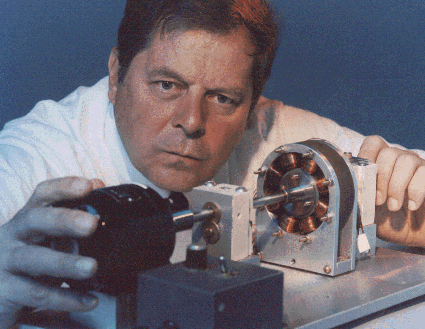 |
|||||
| Home | Research | For Teachers | HISTORY Level 1 Level 2 Level 3 |
PRINCIPLES Level 1 Level 2 Level 3 |
CAREER Level 1 Level 2 Level 3 |
| Gallery | Hot Links | What's New! | |||
| Web Administration and Tools | |||||
 |
|||||
| Home | Research | For Teachers | HISTORY Level 1 Level 2 Level 3 |
PRINCIPLES Level 1 Level 2 Level 3 |
CAREER Level 1 Level 2 Level 3 |
| Gallery | Hot Links | What's New! | |||
| Web Administration and Tools | |||||
![]()
Over the past 40 years, fundamental research programs on rolling-element bearings have been directed at providing technologies that would have application in the many diversified missions of both NASA Lewis and the Army. These programs were directed at increasing bearing speed and load capabilities while improving life and reliability. Through these efforts many advancements were made in analytical capabilities, materials, and designs.
The in-depth computer programs developed for mechanical and thermal performance prediction were verified by laboratory tests. The design and analysis methodology now also widely used by industry include SHABERTH (for ball, cylindrical, and tapered roller bearings), CYBEAN (for cylindrical bearings), SPHERBEAN (for spherical roller bearings), and PLANETSYS (for planet bearings). Included in these computer programs are the capabilities to predict roller raceway loads and stresses, bearing life, heat generation, lubricant film thickness, and steady-state and transient temperatures. Recent hardware-related research includes investigating the use of powdered metal rib rings with tapered roller bearings. An improvement in oil-off survivability was demonstrated. Current studies include developing quality assurance guidelines applicable to grease-lubricated bearings.
POC: Albert F. Kascak

Magnetic Bearing Test Stand
![]()
Send all comments to ![]() aeromaster@eng.fiu.edu
aeromaster@eng.fiu.edu
© 1995-98 ALLSTAR Network. All rights reserved worldwide.
Updated: February 17, 1999